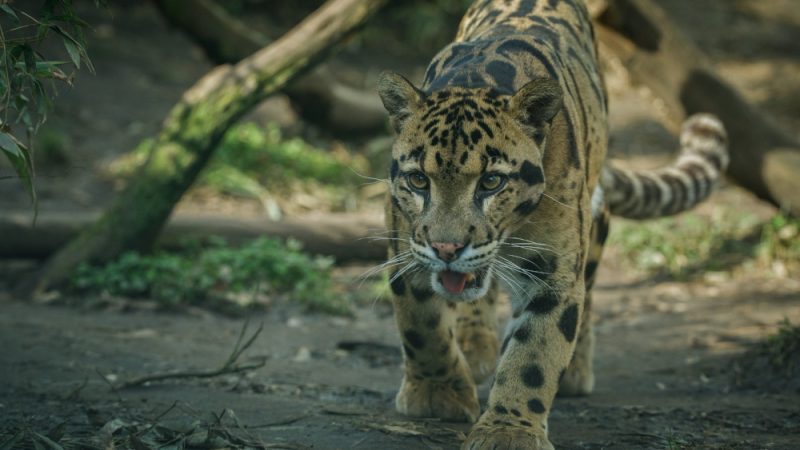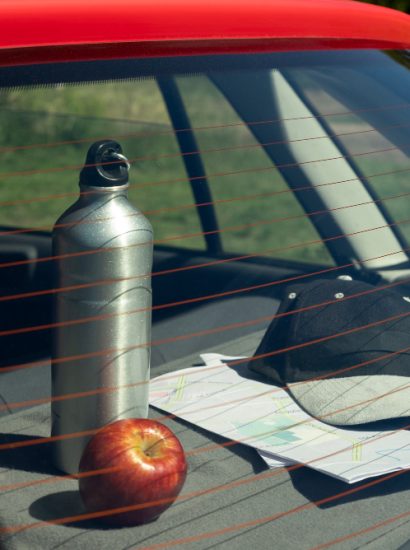The jaguar is one of the most fascinating creatures in the animal kingdom. Known for its strength, stealth, and unmatched power, this big cat holds a special place among the world’s top predators. But how fast is a jaguar really? While it may not be the fastest of the big cats, its speed, combined with its strength and precision, makes it a formidable hunter.
This article explores the true speed of the jaguar, its physical adaptations, hunting strategies, and how it compares to other big cats in the wild.
The Jaguar – An Overview of the Apex Predator
The jaguar, scientifically known as Panthera onca, is the largest cat in the Americas and the third-largest in the world, after the tiger and lion. It is native to the rainforests and wetlands of Central and South America, with the Amazon Basin serving as its primary habitat.
Jaguars are solitary animals that rely on their strength, stealth, and speed to hunt. Unlike cheetahs or lions that prefer open plains, jaguars thrive in dense forests where agility and ambush tactics are more valuable than pure running speed.
The Average Speed of a Jaguar
A jaguar can reach speeds of up to 50 miles per hour (80 kilometers per hour) over short distances. However, this speed is rarely used for long chases. Instead, the jaguar relies on quick bursts of acceleration to ambush prey.
Their hunting technique is based more on power and surprise rather than endurance. Jaguars typically stalk their prey silently, get as close as possible, and then attack with an explosive sprint. Their muscular build allows them to cover short distances at high speed, which is ideal for their dense forest environment.
Comparing Jaguar Speed to Other Big Cats
When comparing the jaguar to other big cats, it becomes clear that while it is not the fastest, it is among the most powerful.
- Cheetah: The fastest land animal, capable of reaching speeds up to 75 miles per hour, far surpasses the jaguar in pure velocity.
- Lion: Can run up to 50 miles per hour in short bursts, similar to the jaguar, but generally for longer distances across open savannas.
- Leopard: A close relative of the jaguar, it can reach speeds up to 58 miles per hour but has a lighter build.
- Tiger: Can sprint at around 40 miles per hour, slower than the jaguar but with greater endurance.
The jaguar’s speed may not top the charts, but its combination of agility, stealth, and raw strength gives it a unique advantage in its natural habitat.
The Role of Speed in Jaguar Hunting
Speed plays an essential role in the jaguar’s hunting technique. However, unlike the cheetah, which relies on long sprints, the jaguar uses short, powerful bursts to close the gap during an ambush.
Jaguars often stalk their prey in thick vegetation or near riverbanks, waiting for the right moment to strike. When the opportunity arises, the jaguar explodes into action, covering the short distance in seconds. The combination of surprise and speed gives the prey little chance to escape.
Once within range, the jaguar uses its powerful jaws and sharp teeth to deliver a single, fatal bite—usually through the skull or neck—demonstrating deadly precision.
Physical Adaptations That Enhance Speed and Power
The jaguar’s speed and hunting ability are supported by several physical adaptations that make it a perfect predator in its environment.
- Muscular Build: Jaguars have dense muscles that provide immense power for both sprinting and jumping.
- Short, Sturdy Limbs: These limbs give them explosive acceleration, though they limit long-distance running.
- Strong Shoulders and Back: These support powerful strikes when pouncing on prey.
- Retractable Claws: Help maintain traction during quick pursuits and aid in climbing and gripping prey.
- Flexible Spine: Allows for fluid movement and agility through dense forest terrain.
These adaptations make the jaguar not only fast but also one of the most versatile hunters in the wild.
The Environment and Its Influence on Jaguar Speed
The jaguar’s environment plays a crucial role in shaping its physical abilities. Living primarily in rainforests, swamps, and dense woodlands, the jaguar does not need to run long distances like savanna predators. Instead, it needs agility, quick acceleration, and stealth.
Its habitat is full of trees, undergrowth, and rivers, where high-speed chases are impractical. Therefore, jaguars evolved to use short bursts of speed combined with ambush tactics. Their spotted coats also act as camouflage, allowing them to blend seamlessly into the shadows before making a rapid and powerful strike.
Strength Over Speed – The Jaguar’s Real Power
While speed contributes to the jaguar’s hunting success, its strength is what truly sets it apart. Jaguars possess one of the most powerful bites among all big cats, capable of exerting over 1,500 pounds of pressure per square inch.
This force allows them to pierce the skulls or shells of their prey, which includes caimans, capybaras, deer, and even turtles. Rather than chasing prey over long distances, jaguars rely on ambush and brute power to subdue it quickly.
In essence, the jaguar trades top-end speed for unmatched power, making it one of nature’s most efficient predators.
How Jaguars Compare to Cheetahs and Leopards
The jaguar, cheetah, and leopard share similarities as big cats but have evolved distinct hunting strategies suited to their environments.
- Cheetahs rely on their speed to hunt across open grasslands. They chase down prey in a matter of seconds, relying on bursts of extreme velocity.
- Leopards use stealth and agility, similar to jaguars, but are lighter and faster. They often drag their kills up trees to protect them from scavengers.
- Jaguars, on the other hand, rely on stealth, short sprints, and sheer power. Their strength allows them to tackle larger prey and even drag it across rivers or up embankments.
Each of these cats represents a different evolutionary approach to survival, with the jaguar being the master of power and ambush.
Swimming and Climbing Abilities – Speed Beyond the Ground
Unlike most big cats, jaguars are excellent swimmers. They are often found near rivers and lakes, where they hunt fish, turtles, and even caimans. Their powerful limbs allow them to swim gracefully and swiftly through water.
Jaguars are also skilled climbers. They can quickly ascend trees to survey their territory or ambush prey from above. These additional abilities make the jaguar a versatile predator, capable of dominating both land and water environments.
Their adaptability ensures that even without top-tier speed, they remain highly effective hunters in every terrain they inhabit.
Conservation and the Future of the Jaguar
Despite their strength and adaptability, jaguars face significant threats due to habitat loss, poaching, and human-wildlife conflict. Once ranging from the southwestern United States to Argentina, their populations have dramatically declined over the past century.
Conservation programs are working to protect jaguar habitats and reconnect fragmented territories. Preserving their ecosystems not only helps jaguars but also safeguards the countless species that share their environment.
The jaguar’s speed and strength symbolize nature’s balance — but without protection, this majestic predator may lose its place as the top cat of the Americas.
Conclusion
So, how fast is a jaguar? While it can reach speeds of up to 50 miles per hour, its true hunting success lies not in endurance but in precision, stealth, and power. The jaguar’s ability to ambush prey with explosive speed, combined with its unmatched bite force, makes it one of the most efficient and awe-inspiring predators on Earth.
Rather than racing across open plains, the jaguar dominates its dense rainforest habitat through silence, strength, and sudden bursts of speed — the mark of a true apex predator.
FAQs
1. How fast can a jaguar run?
A jaguar can run up to about 50 miles per hour, but only for short distances. Its speed is used mainly for sudden bursts during ambush hunts rather than long chases.
2. Is the jaguar faster than a leopard?
No, the leopard is slightly faster, capable of reaching speeds up to 58 miles per hour. However, the jaguar is stronger and more powerful.
3. Can jaguars swim faster than they run?
While not faster than their land speed, jaguars are exceptional swimmers. They move efficiently through water and often hunt aquatic prey, making them one of the few big cats comfortable in water.
4. What makes the jaguar such an effective hunter?
The jaguar combines stealth, short bursts of speed, immense strength, and a powerful bite. These traits make it a highly effective ambush predator.
5. Where are jaguars most commonly found?
Jaguars are most commonly found in Central and South America, particularly within the Amazon rainforest, where they thrive in dense vegetation and near rivers.
Also read: Huel Alternatives: The Best Meal Replacements for Nutrition and Taste









